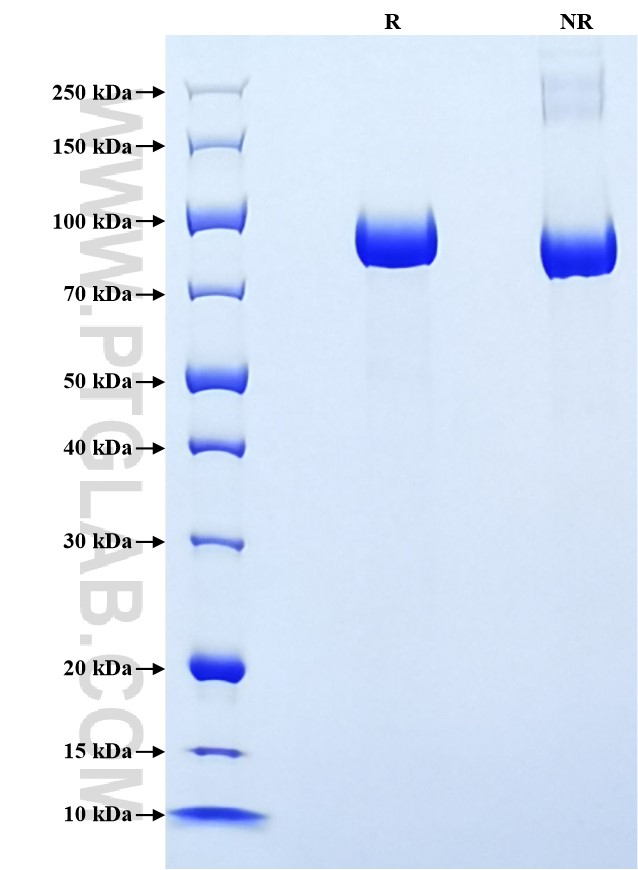Recombinant Rat MMP9 protein (His Tag)
种属
Rat
纯度
>90 %, SDS-PAGE
标签
His Tag
生物活性
未测试
验证数据展示
产品信息
| 纯度 | >90 %, SDS-PAGE |
| 内毒素 | <0.1 EU/μg protein, LAL method |
| 生物活性 |
Not tested |
| 来源 | HEK293-derived Rat MMP9 protein Ala20-Pro708 (Accession# EDL96479.1) with a His tag at the C-terminus. |
| 基因ID | 81687 |
| 蛋白编号 | EDL96479.1 |
| 预测分子量 | 80.2 kDa |
| SDS-PAGE | 80-100 kDa, reducing (R) conditions |
| 组分 | Lyophilized from 0.22 μm filtered solution in PBS, pH 7.4. Normally 5% trehalose and 5% mannitol are added as protectants before lyophilization. |
| 复溶 | Briefly centrifuge the tube before opening. Reconstitute at 0.1-0.5 mg/mL in sterile water. |
| 储存条件 |
It is recommended that the protein be aliquoted for optimal storage. Avoid repeated freeze-thaw cycles.
|
| 运输条件 | The product is shipped at ambient temperature. Upon receipt, store it immediately at the recommended temperature. |
背景信息
MMP9 (matrix metallopeptidase 9), also named as Gelatinase B, is a member of matrix metalloproteinase (MMP) family. The MMP family of enzymes is comprised of critically important extracellular matrix remodeling proteases whose activity has been implicated in normal embryogenesis, tissue remodelling and many diseases such as arthritis, cancer, periodontitis, glomerulonephritis, encephalomyelitis, atherosclerosis and tissue ulceration. MMP9 is produced by a variety of normal and transformed cells including neutrophils, monocytes, macrophages, astrocytes, fbroblasts, osteoclasts and so on. Transgenic mouse models report that MMP9 contributes to skin carcinogenesis, suppresses development of experimental abdominal aortic aneurysms, and triggers the angiogenic switch during carcinogenesis.
参考文献:
1. Roy, Roopali et al. (2009) J Clin Oncol. 27(31):5287-5297. 2. Tanindi, Asli et al. (2011) Open Cardiovasc Med J. 5:110-116. 3. Coussens, L M et al. (2000) Cell. 103(3):481-490. 4. Pyo, R et al. (2000) J Clin Invest. 105(11):1641-1649. 5.Bergers, G et al. (2000) Nat Cell Biol. 2(10):737-744.


